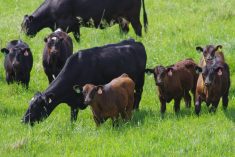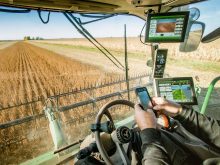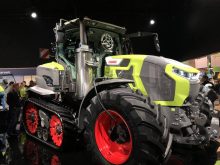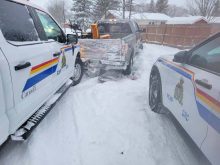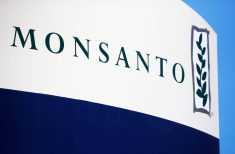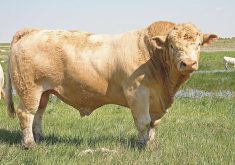Duane McCartney says growers need to keep up with new varieties and improved methods for dealing with issues such as bloat and pasture management
Forages don’t get the respect they deserve.
That was the message retired Agriculture Canada research scientist Duane McCartney delivered to the Alberta Forage Industry Network meeting.
“The forage industry in Canada and Alberta is a very, very big industry,” McCartney told attendees. “Your organization needs to get that kind of information out.”
Forage acreage has dipped a little in recent years, but remains one of Western Canada’s largest crops and its economic impact is increasing, he said.
While many considered the cattle industry to be centred on the Prairies, the 2011 Census of Agriculture showed the majority of cattle are in the Parkland areas — partly because they get more rainfall and therefore grow better grass.
Read Also

Grazing ‘sweet spot’ boosts pasture performance
Timing-focused approach to pasture management touted to boost forage growth, livestock gains while also cutting farmer labour and inputs
The rise in grain and oilseed prices has seen more Prairie pastures converted to crop production and that increases the need to improve pasture productivity, he said.
“When people take those lands out of pasture, and put them in grain land, the acreages that are left have to be more productive,” said McCartney. “These acres have to support the grazing industry.”
He urged his audience to seek professional advice and consider new ideas to improve both production and profitability of their forages.
Research is showing that what happens between grazing periods is critical in forage production, he said.
“The resting of the plant is the only way of sustaining high production year after year,” McCartney said.
Even one day can make a difference, he said, because when a plant is grazed for an extra day in the spring, three days of grazing are lost in the fall.
Extra care needs to be taken on pastures bordering waterways, he said.
“In the past, we’ve been grazing riparian areas too long, too fast, and too often,” he said. “We have to continue promoting the idea of creating water systems so cattle are not in the streams.”
Riparian areas need to be grazed, but should only be grazed during certain times of the year, he said.
Forage breeding
Forage research is also constantly advancing. Forage breeding programs have released new crested wheatgrasses and hybrid brome grasses in recent years. Researchers in Quebec have been investigating energy and biomass production, while those in Saskatoon are investigating the importance of breeding tannins into alfalfa varieties to prevent bloat. Researchers at the University of Saskatchewan are investigating forage oat and barley breeding, while Lacombe researchers are investigating new varieties of improved triticale for cattle grazing.
Other research has shown that if cattle are allowed access to grass and alfalfa at the same time, they have a reduction in bloat.
“There is a lot of activity on seeding grass and alfalfa in strips to prevent bloat,” said McCartney.
Other research has shown having two legumes in production at the same time is the most beneficial and two grasses alone will not give adequate yield.
“Alfalfa and other legumes draw water from way down in the ground, whereas grasses are shallow rooted,” he noted.
By early July, southern Alberta has grown its peak amount of forage. In the Melfort, Saskatoon and Lacombe areas, July 15 is the date for top forage yields.
“You have to decide at that point in time, whether you will have enough to carry you through the next winter,” he said. “These are two numbers the forage industry needs to work around.”
The forage industry can also become stronger if the hay industry is developed properly, he said. This includes re-evaluating the hay grading standard system. Anyone interested in selling to hay to the U.S. can look up protocols on Alberta Agriculture’s CowBytes website. Hay needs to be stored so air can circulate between bales.
Growers also need to pay more attention to the issue of wildlife damage, he said.
“Your organization needs to work with government and policy-makers to look at the hunting aspects so they can get rid of those kinds of problems,” said McCartney. “It’s a big social issue but we still need to address it. It’s costing some people a lot of money each year because they have to feed the Queen’s cattle.”



